September 15, 2021
How to Lose an Iceberg in Ten Days (Unless You Have a Cryologger)
Posted by Adam Garbo

Introduction
In August 2021, I joined the Canadian Coast Guard research icebreaker CCGS Amundsen as a Master’s student working with Dr. Luke Copland in the Laboratory for Cryospheric Research at the University of Ottawa. Over the previous year, I had designed and built a new open-source Cryologger Ice Tracking Beacon (ITB), a system I developed to provide reliable, high-resolution drift observations of Arctic icebergs. The 2021 Amundsen Expedition offered an excellent opportunity to deploy this new design in the field.
During Leg 3 of the expedition, we installed ten Cryologger ITBs on icebergs drifting from the head of Talbot Inlet in Nares Strait, moving south through Baffin Bay and into Davis Strait. These deployments formed the foundation of my MSc research and created an opportunity to combine engineering, helicopter-based fieldwork, and cryospheric science to better understand iceberg motion in one of the most dynamic drift corridors in the Canadian Arctic.
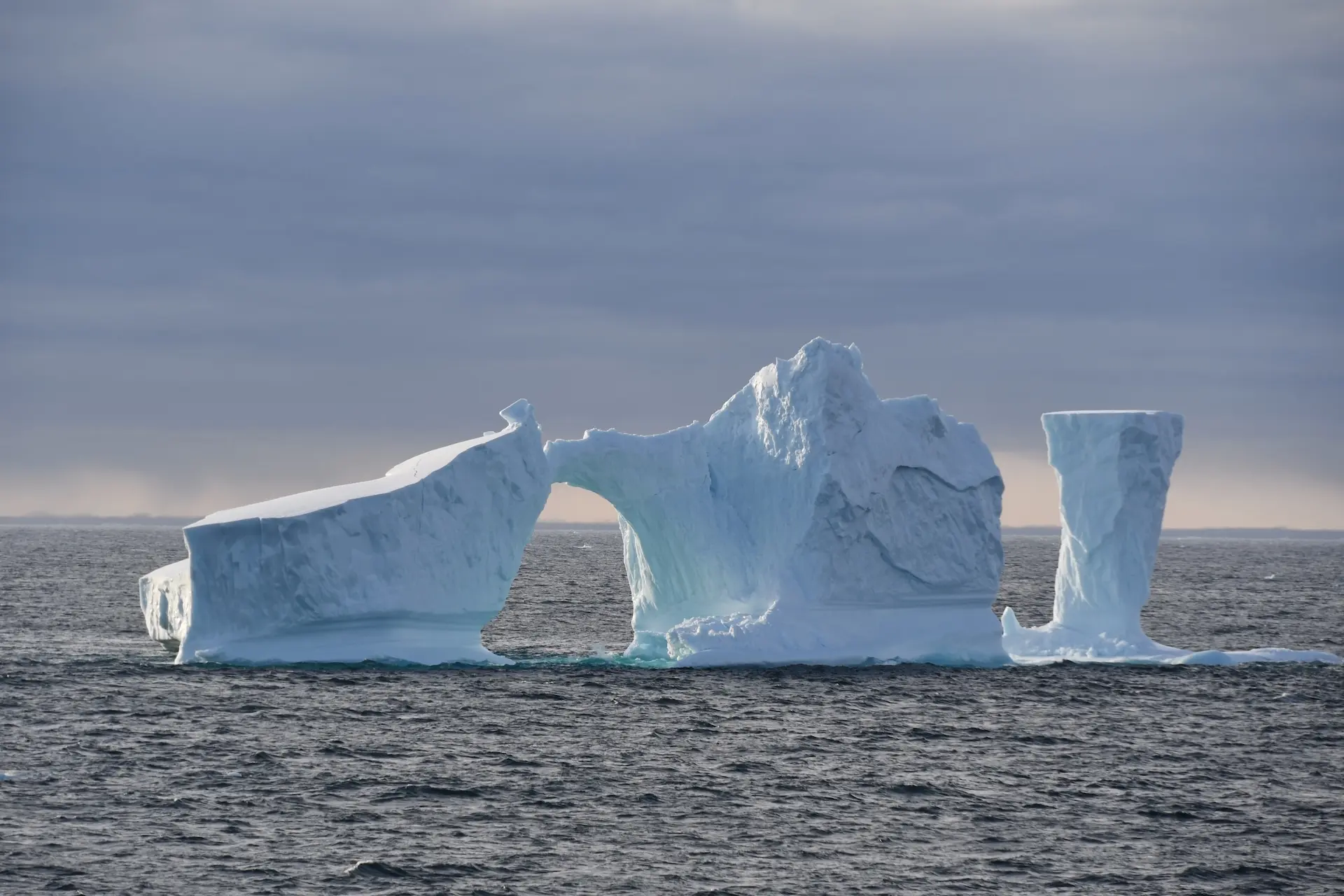
Scientific Context
The 2021 Cryologger deployments were designed to support my MSc research, which focused on evaluating how well the North American Ice Service (NAIS) iceberg drift model performs in Arctic conditions. Although NAIS had been used operationally in the North Atlantic, its performance in the Arctic remained largely untested due to the scarcity of in-situ observations.
The high-temporal-resolution Cryologger data collected during the field season were intended to help fill that gap. By combining these new drift tracks with existing historical datasets, my research aimed to run a comprehensive series of model hindcasts to assess how closely NAIS-predicted trajectories align with real iceberg motion. This work would help determine how the model performs across different timescales and whether its behaviour in the Arctic is consistent with performance reported elsewhere.
These detailed drift observations provided essential context for improving our understanding of Arctic iceberg dynamics and for evaluating how well existing drift models capture the forces acting on icebergs in data-sparse northern waters.

Adam Garbo and Luke Copland preparing for helicopter-based Cryologger ITB deployments.
Cryologger: A New Approach to Iceberg Tracking
The Cryologger Ice Tracking Beacon is an instrument I designed to address a longstanding gap in Arctic research: the need for reliable, high-frequency observations of iceberg drift in regions where in-situ data are scarce. The system was engineered specifically for autonomous use in remote polar environments, combining GNSS positioning, Iridium satellite communication, environmental sensing, and a power-efficient control system within a compact, cold-weather-resilient housing.
For the 2021 Amundsen Expedition, the ITB was deployed as a fully field-ready platform capable of transmitting continuous drift and environmental data from a range of iceberg sizes, morphologies, and drift regimes. What distinguishes the system is not only its technical design, but its broader intent — to provide an open, adaptable tool that can expand the observational capacity available for cryospheric research.
Deployments Across Baffin Bay
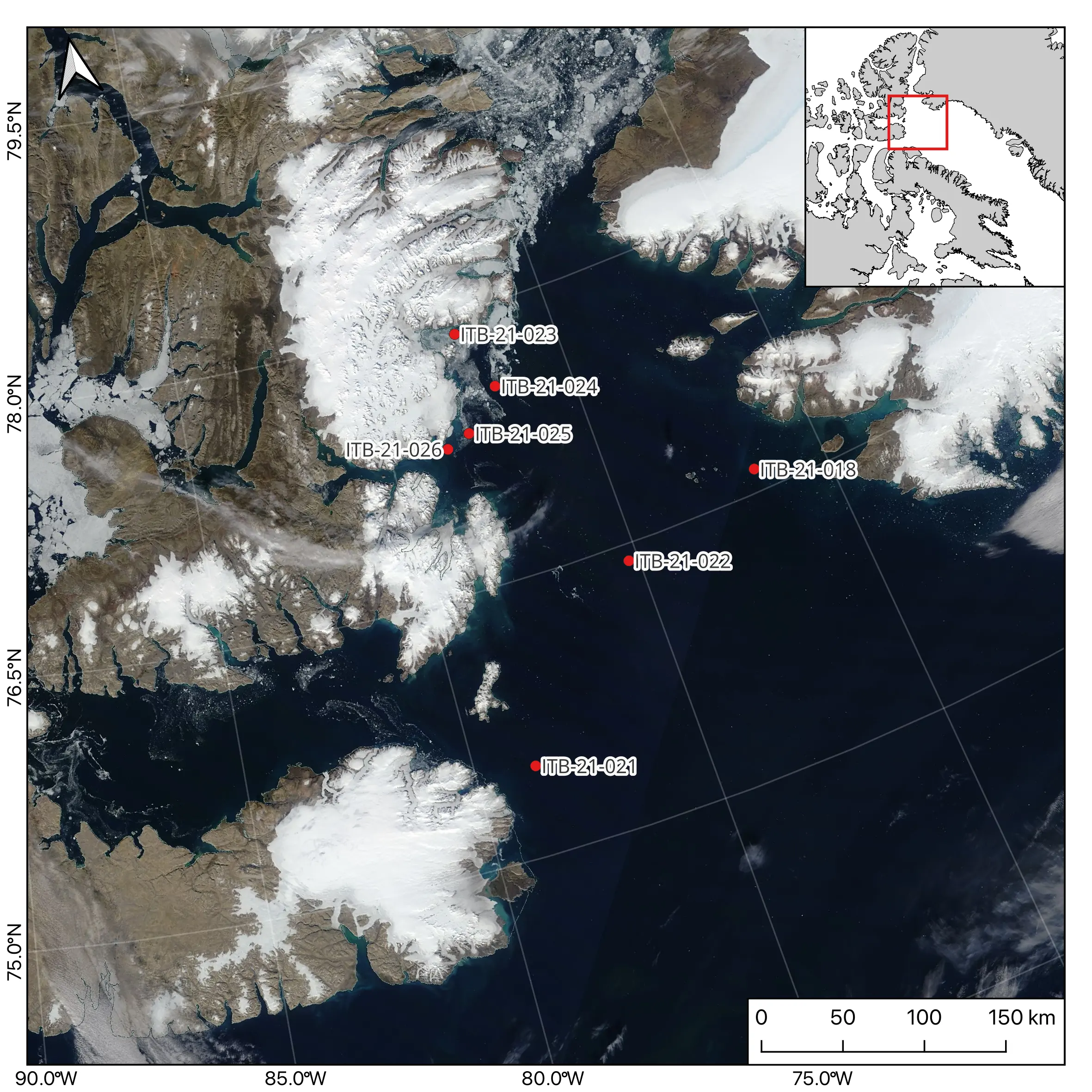
Cryologger ITB deployments made throughout the Nares Strait region during the 2021 Amundsen Expedition.
The deployments were a key component of the field season. Working with helicopter pilot Sebastian Tremblay, we travelled from the ship to each iceberg by air, flying over waters scattered with smaller pieces of glacial ice. Each iceberg required assessment from above, as morphology and surface conditions varied widely.
Icebergs that were identified as safe to land on were generally tabular in shape. Icebergs with cracks, ridges, or melt features that required more caution were avoided. Once a safe landing site was identified, we touched down briefly to deploy the beacon.
Each deployment required a short series of measurements and observations, including:
- estimating the iceberg’s dimensions, including freeboard derived from the helicopter altimeter
- assessing its waterline length and overall geometry
- recording notable surface conditions or structural features
- conducting a 360° aerial photo survey, when weather allowed
These measurements helped interpret the drift data later on, providing context for how each iceberg moved, rotated, and responded to local oceanographic and atmospheric forces.
Reflections from the Field
Designing an instrument, deploying it by hand onto drifting icebergs, and watching it send back data for months to years afterward created a continuity between engineering and field science that shaped my approach to research. Cryologger began as a personal project but grew into a platform capable of supporting meaningful Arctic monitoring and scientific discovery.
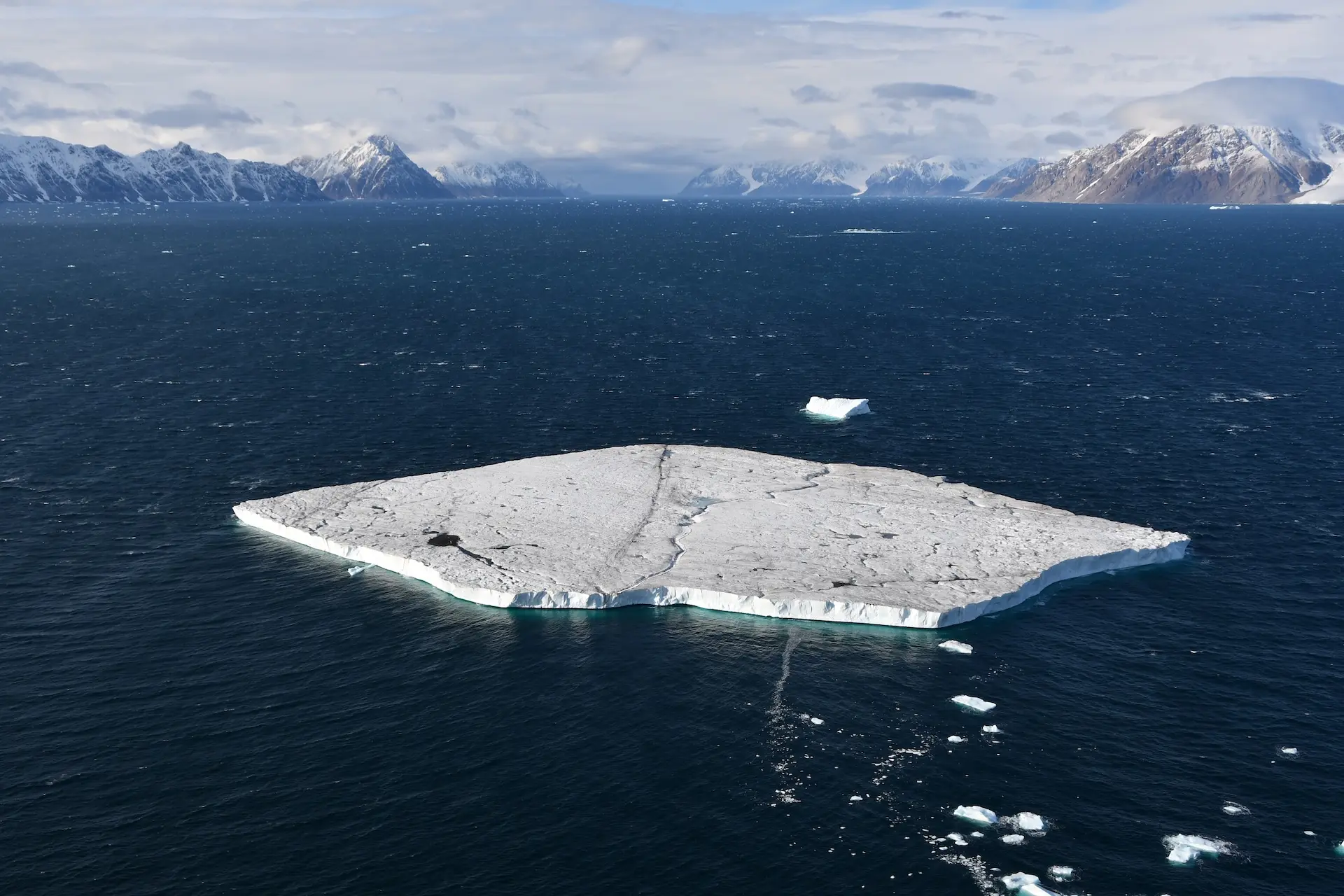
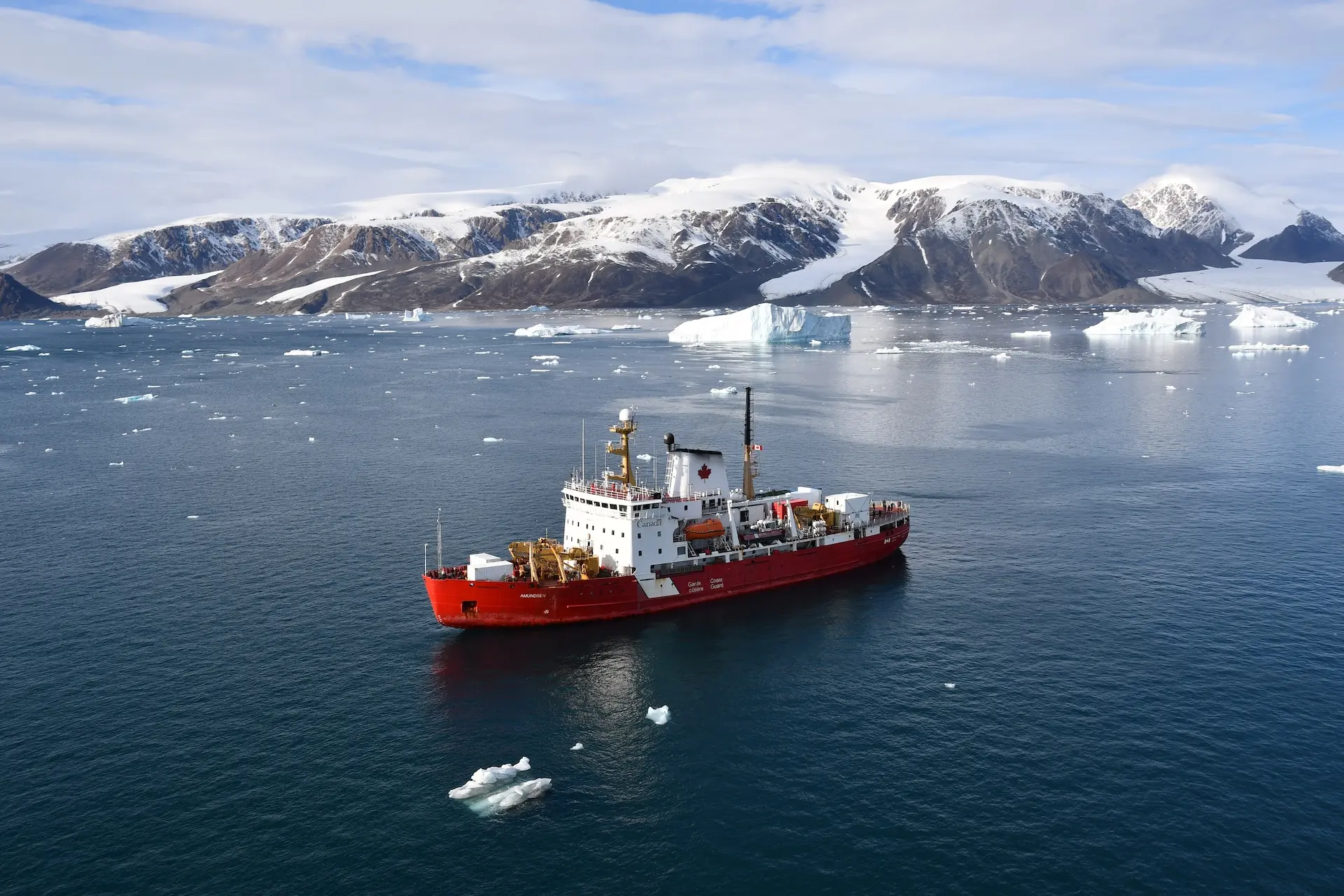

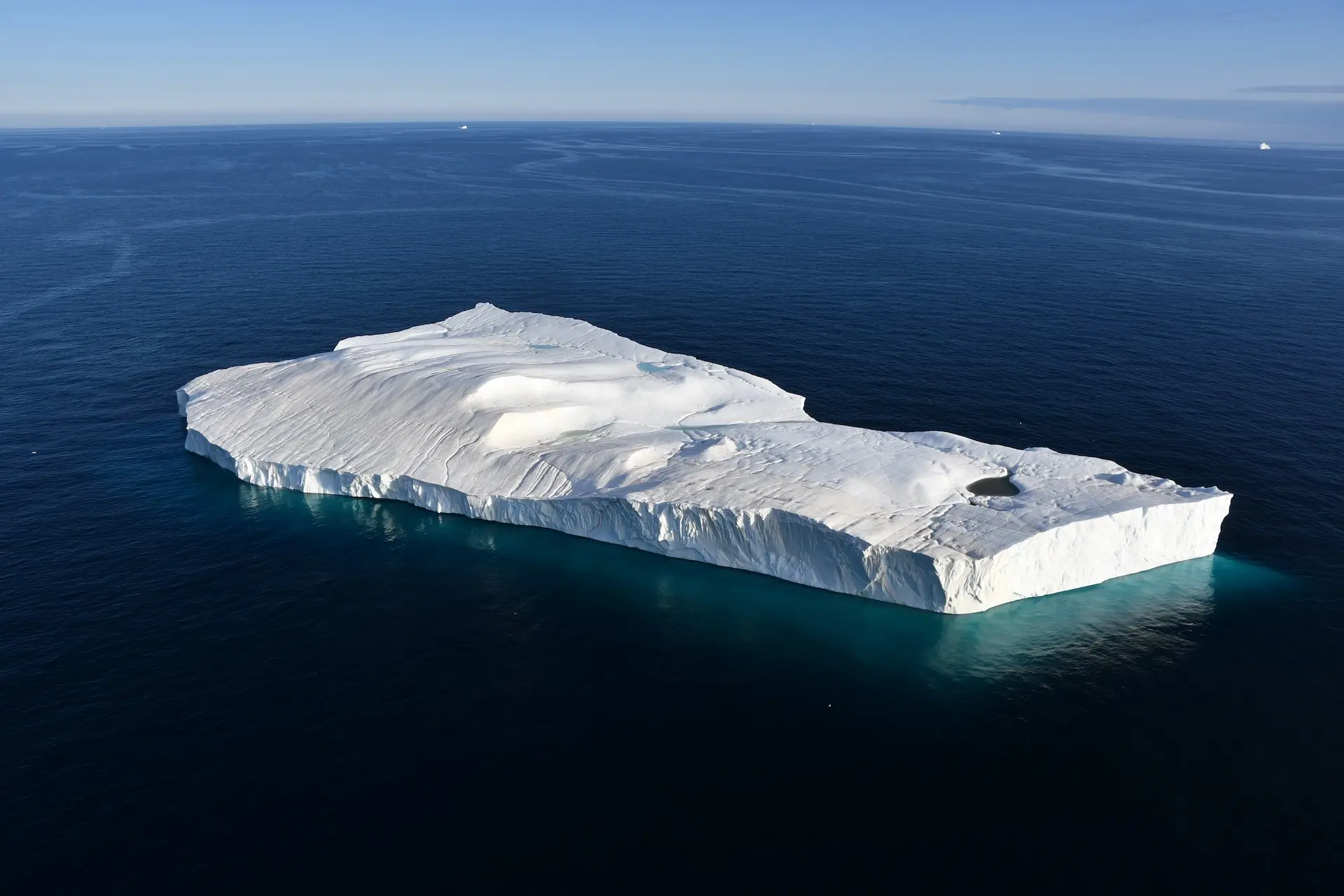
Icebergs surveyed during the 2021 Amundsen Expedition and the CCGS Amundsen.
More than anything, the 2021 season highlighted the value of accessible, open-source technology in polar research. When tools are affordable and reproducible, field science becomes more collaborative, and more capable of capturing the complexity of rapidly changing northern environments.
Landing on an iceberg, even briefly, changes how you understand the Arctic. These ice masses are not static hazards but dynamic, evolving bodies shaped by geography, weather, and ocean currents. Seeing them up close, and tracking their movement long after leaving the field, deepens my appreciation for the systems that drive their motion across the Canadian High Arctic.
Acknowledgements
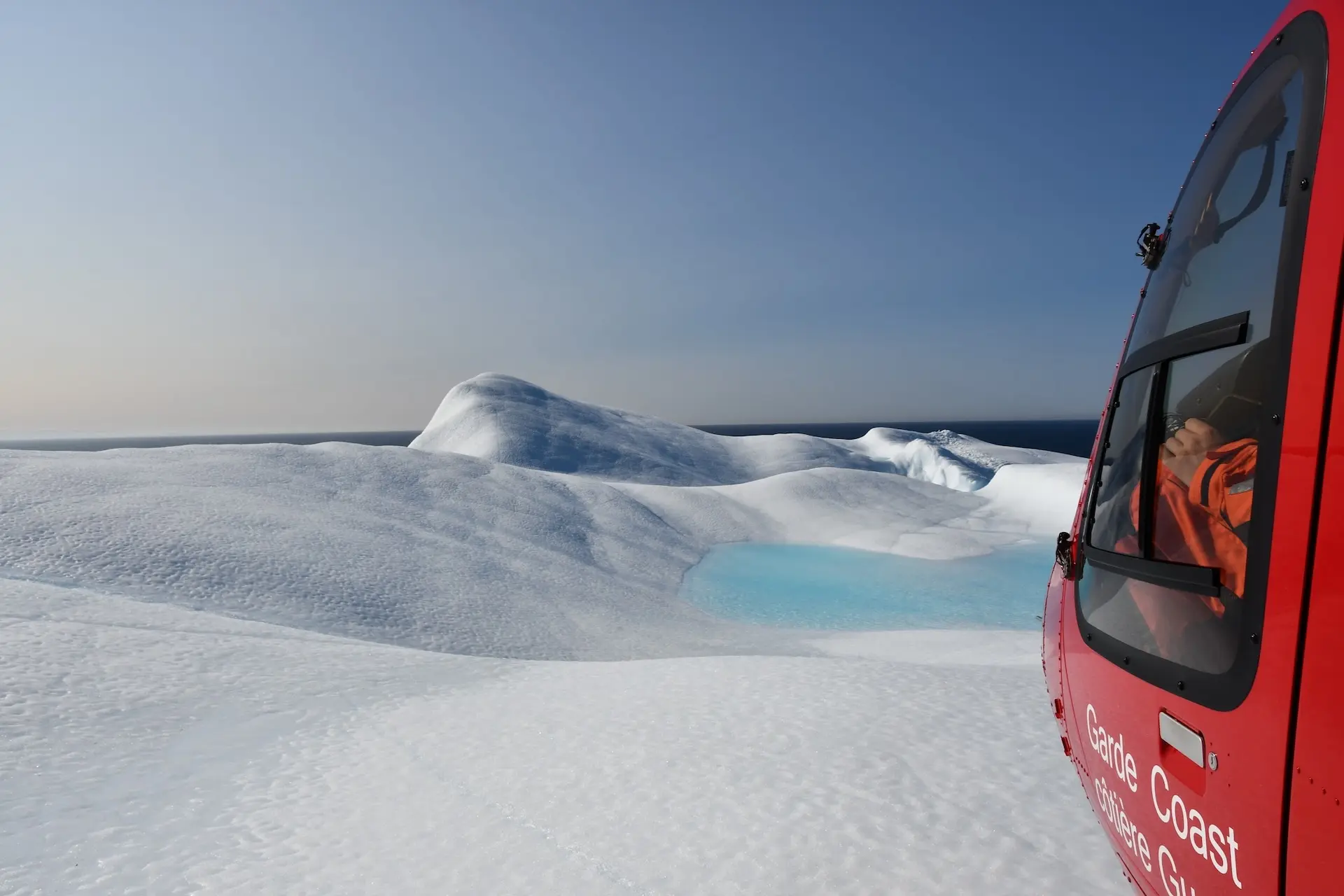
View from the Amundsen’s helicopter while landed on an iceberg during an ITB deployment.
This work was supported by Amundsen Science, the Natural Sciences and Engineering Research Council of Canada (NSERC), the Canada Foundation for Innovation (CFI), and the Polar Continental Shelf Program (PCSP), as well as the Northern Scientific Training Program (NSTP). I am grateful to the captain and crew of the CCGS Amundsen, the Chief Scientists for Leg 3, and helicopter pilot Sebastian Tremblay for their support and collaboration throughout the expedition.